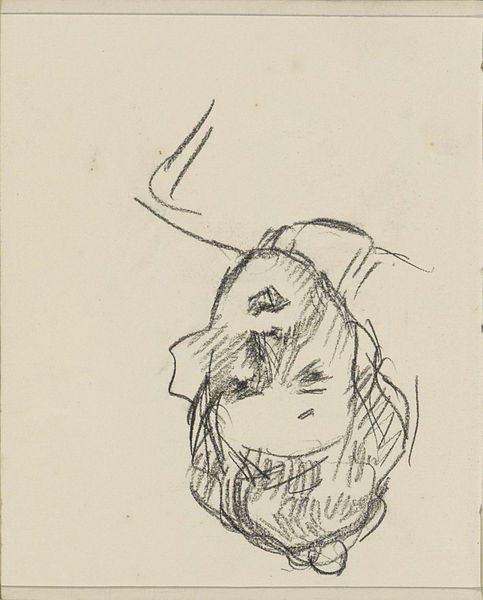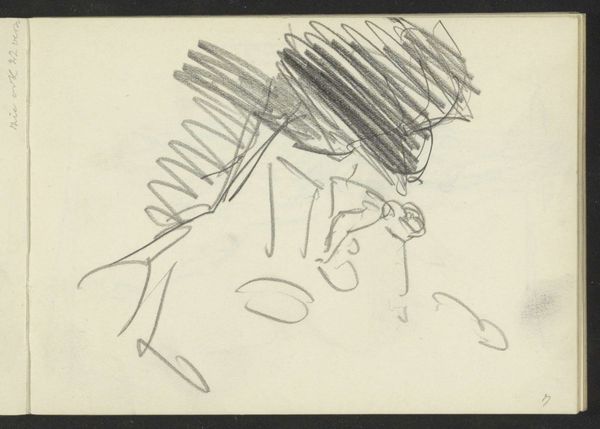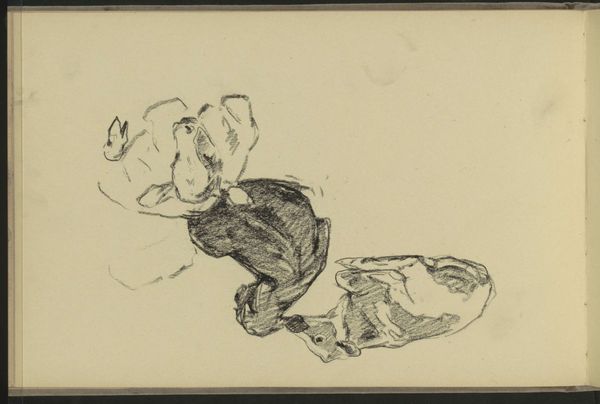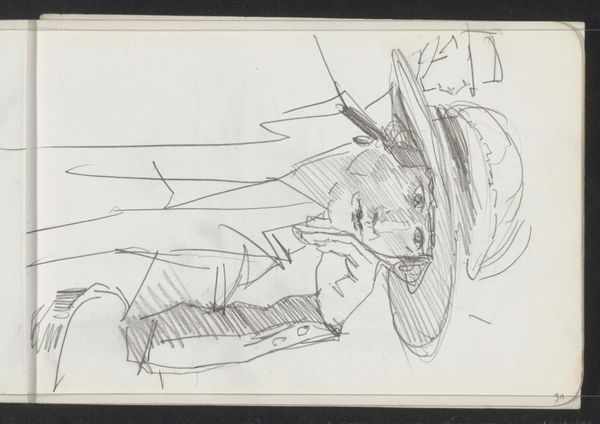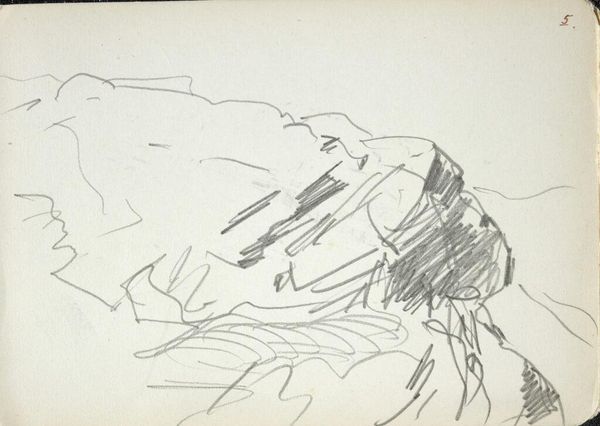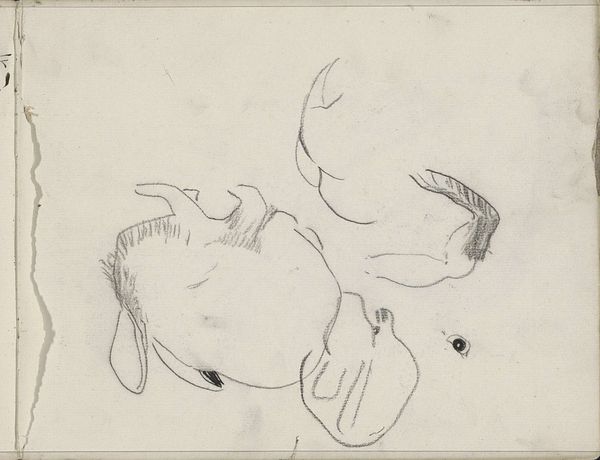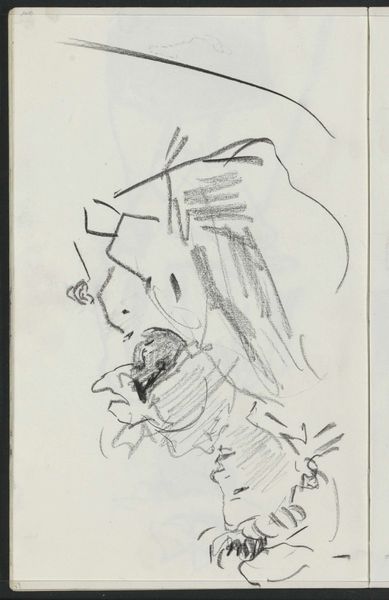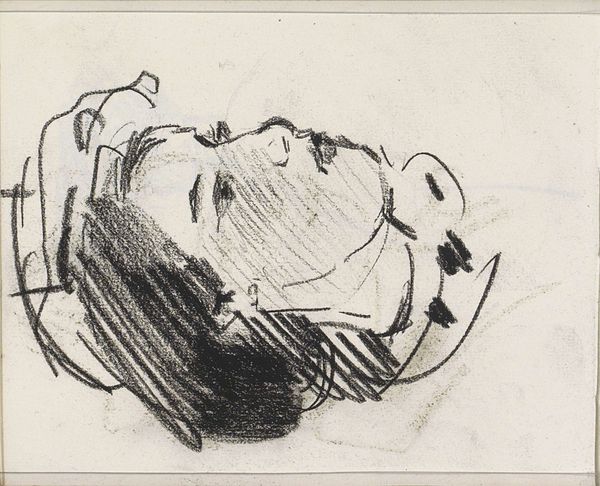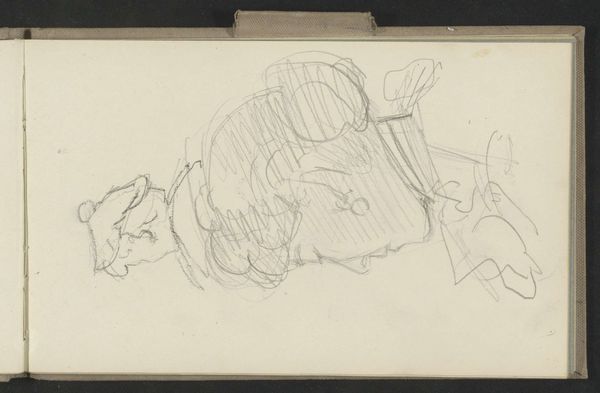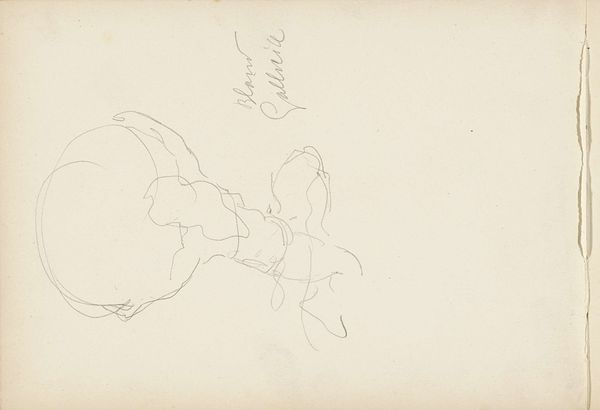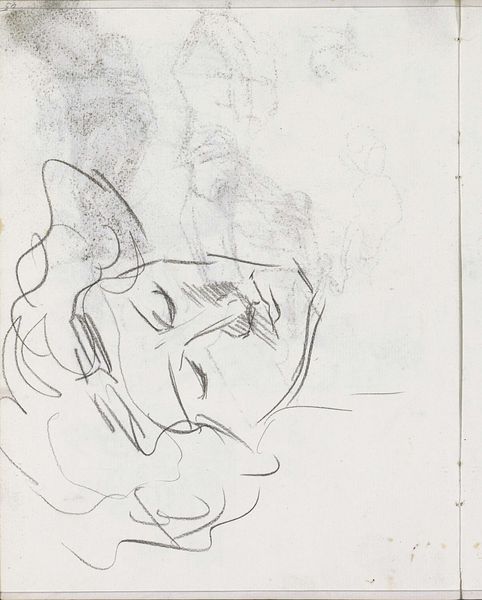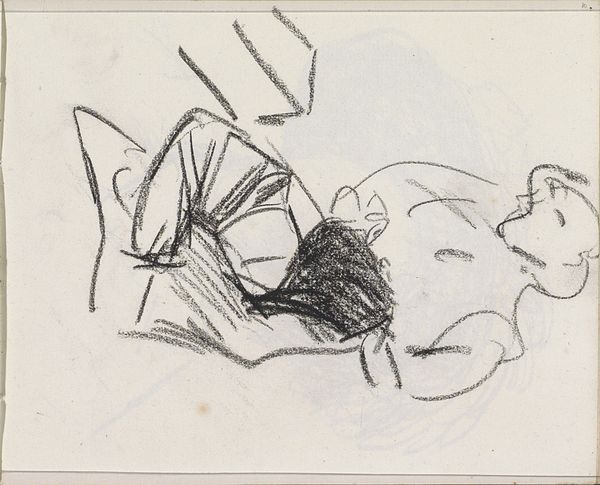
Copyright: Rijks Museum: Open Domain
Editor: We're looking at "Woman's Head with Hat, in Profile," a graphite drawing by Isaac Israels, made sometime between 1875 and 1934. It feels so spontaneous, like a fleeting impression captured with a few confident strokes. What do you see in the composition of this sketch? Curator: Precisely. Note the strategic deployment of line: thick, assertive strokes define the hat, while thinner, more hesitant marks delineate the facial features. The negative space, particularly around the swirling hat, is as crucial as the drawn lines themselves. How does this interplay of positive and negative space affect your reading of the work? Editor: It makes it feel airy, like the figure could almost float off the page. The hat is definitely the dominant feature, though. Is that intentional? Curator: It is a study in contrasts. Consider how the density of graphite in the hat creates a visual weight that anchors the composition. Now, observe the directionality of the hatching within the hat. Does it follow a discernible pattern, and if so, what effect does that create? Editor: I see how the hatching follows the form, giving it volume, despite being a simple sketch. Is the contrast between the detailed hat and the almost abstracted face common in his work? Curator: Israels was a master of suggestion, conveying form with minimal detail. The unfinished quality invites the viewer to actively participate in constructing the image. Do you find this openness contributes to or detracts from the artwork's overall impact? Editor: I think it adds to it! It’s more engaging because my mind fills in the gaps. I’ve definitely learned to appreciate how much a few simple lines can convey. Curator: Indeed, the artist demonstrates a keen understanding of visual economy. Focusing on the essential elements allows for a more powerful, and perhaps more personal, connection with the viewer.
Comments
No comments
Be the first to comment and join the conversation on the ultimate creative platform.
